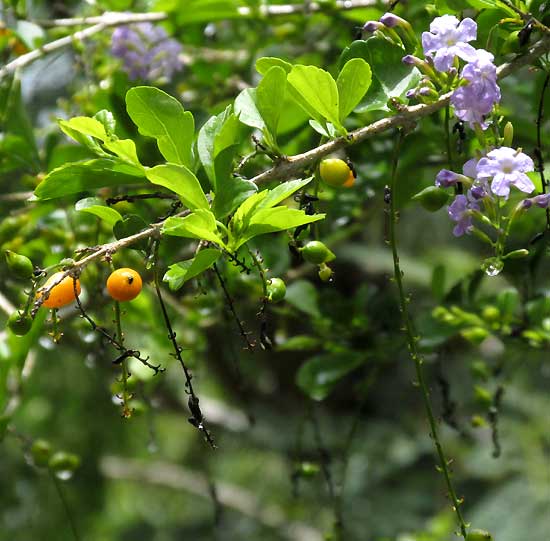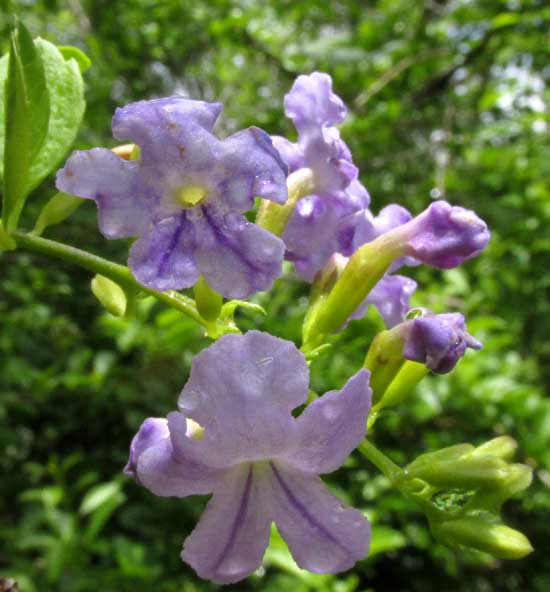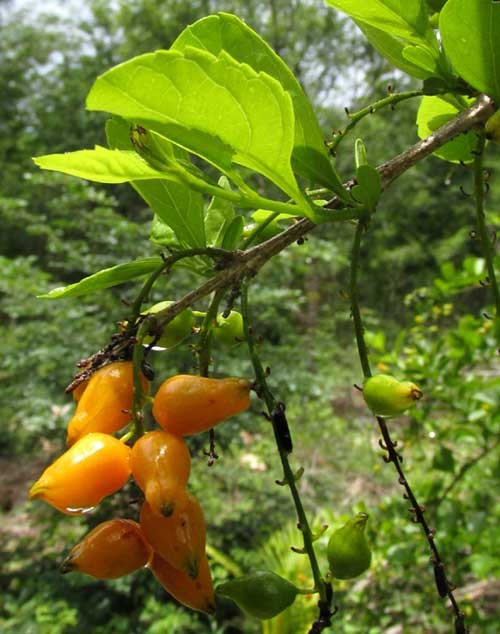Excerpts from Jim Conrad's
Naturalist Newsletter
from the June 18, 2017 Newsletter issued from Rancho Regensis north of Valladolid, Yucatán, MÉXICO;
elevation ~40m (~130 ft), N~20.876°, W~88.170°
GOLDEN DEWDROP FLOWERING
For several weeks a large bush or much-branched small tree has been issuing flowers. Below, you can see a branch bearing both flowers and fruits:

In that picture, the long, dangling items are what's left of flower clusters, or inflorescences. Despite the plants many flowers, apparently most flowers simply fall off, setting to fruits, leaving behind only the flowers' short pedicels. A close up of some flowers is shown below:

There you can see smallish corollas that are lilac in color and arranged in slender racemes, their narrow corolla tubes topped with five abruptly spread corolla lobes. The corolla tubes are curved, so the blossoms are bilaterally symmetrical, not radially. A close-up of the orangish fruits is shown below:

All these details suggest the Verbena Family, the Verbenaceae. Once the family is recognized, it's easy to establish that this is DURANTA ERECTA, in English variously known as Golden Dewdrop, Pigeon Berry, Skyflower and other names. It's native from Mexico and the Caribbean south to South America. Its various English names reflect the fact that it's pretty enough to be cultivated as an ornamental in tropical and subtropical garden throughout the world.
In fact, in many parts of the world Golden Dewdrop has escaped from gardens and become an invasive species. In Australia it's ranked as one of the most invasive of weeds. It's hard to be sure whether plants found here are planted or natural. Probably we have both.